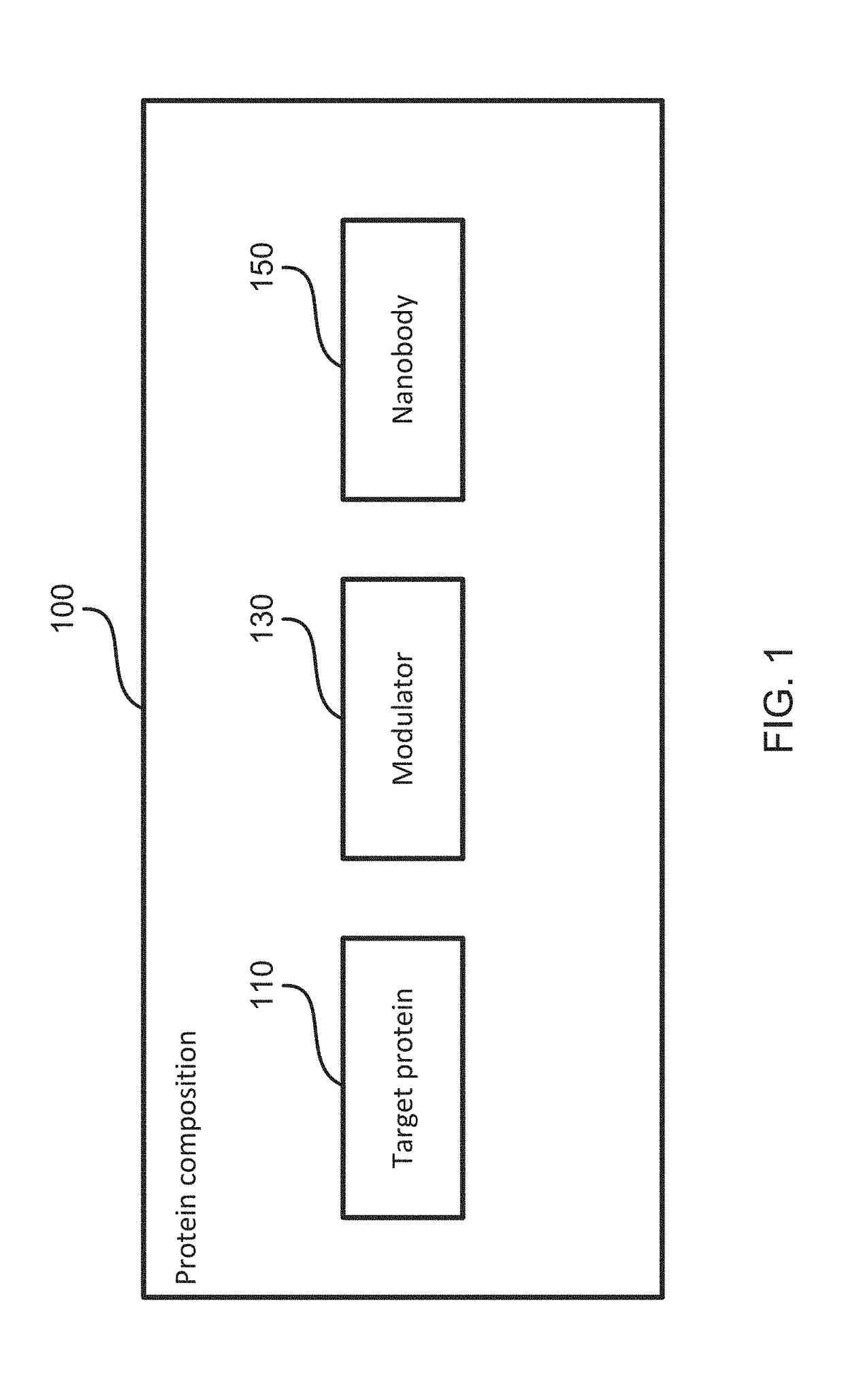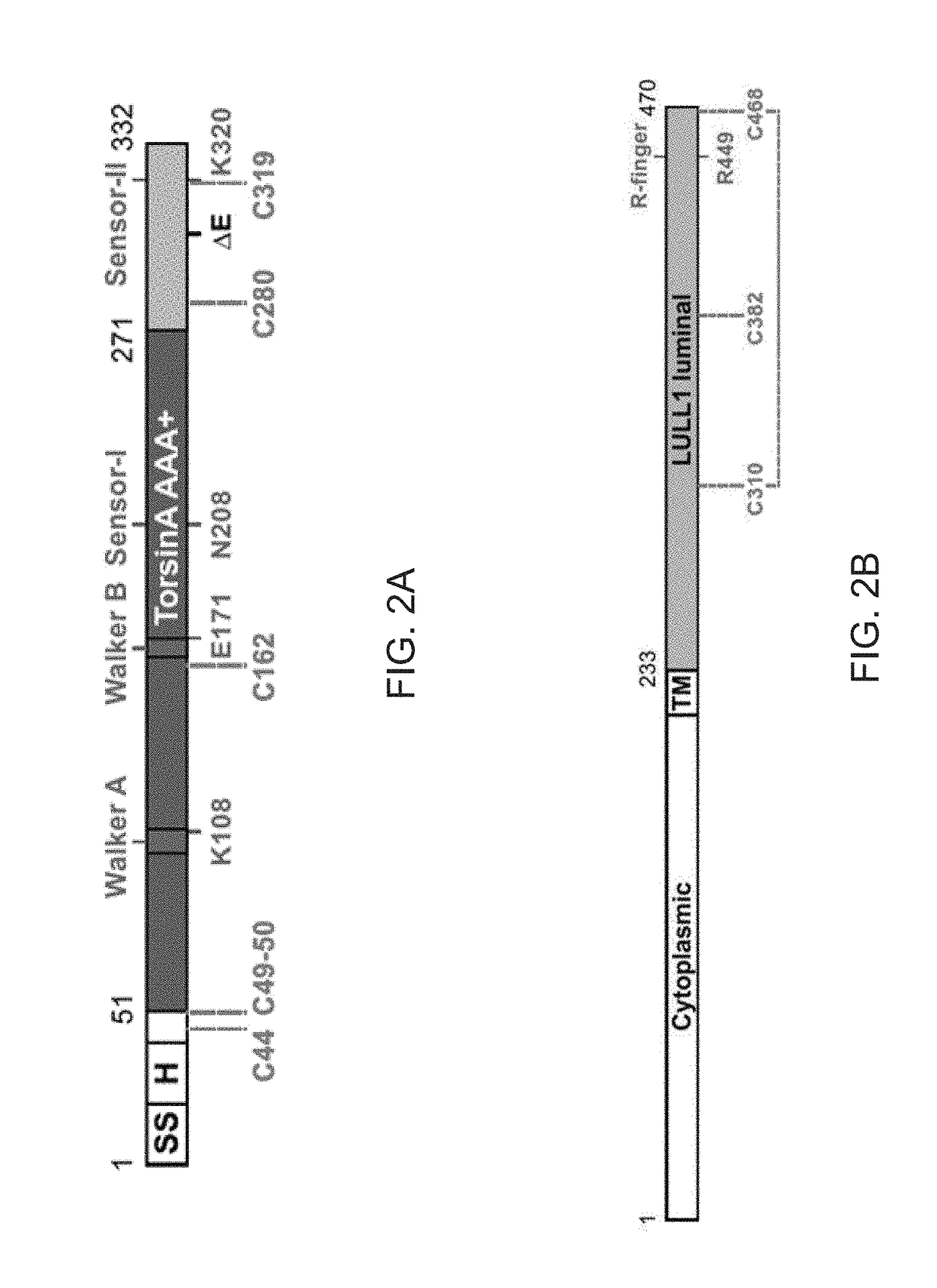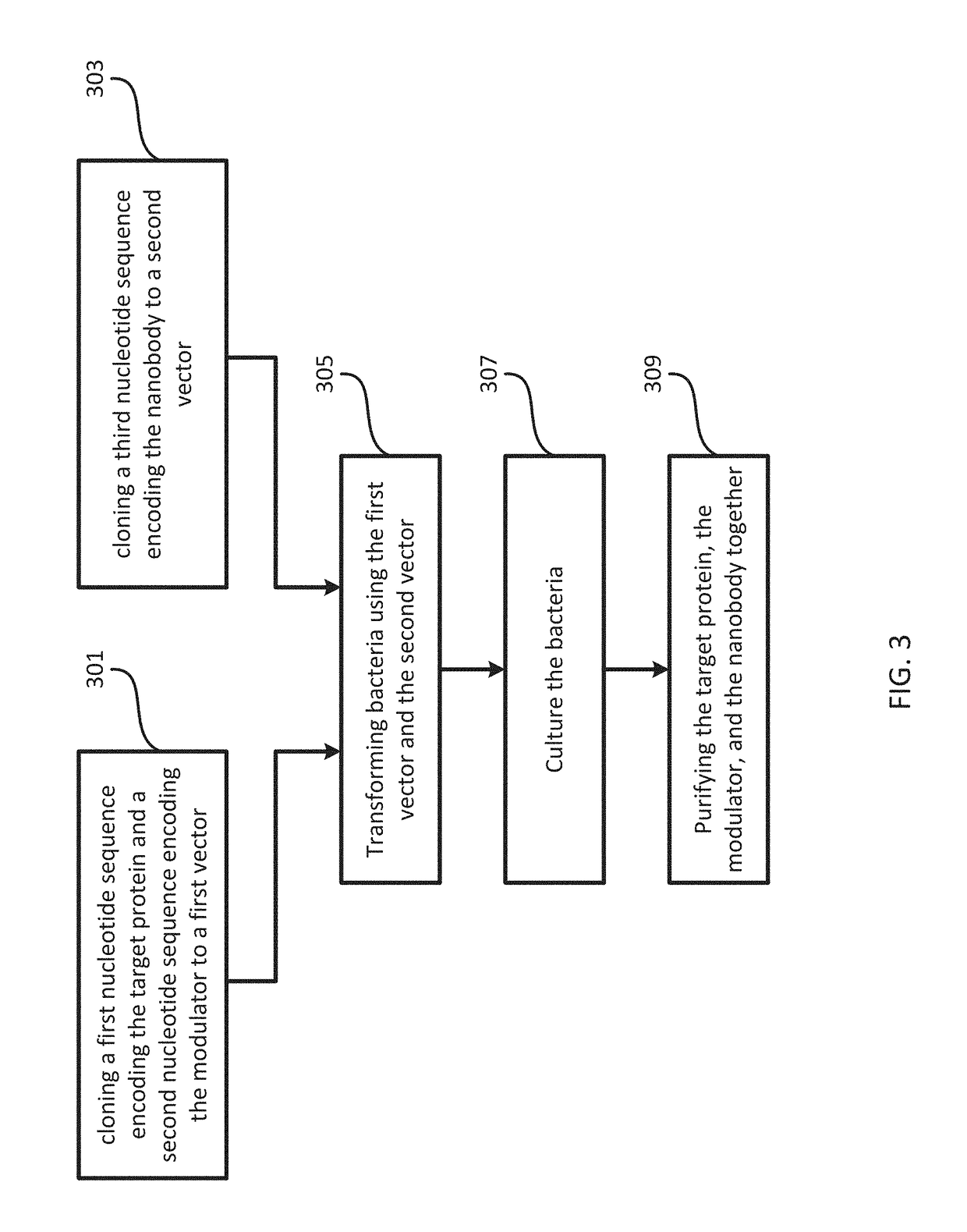Crystal structures of human torsin-a and methods of determining and using the same
- Summary
- Abstract
- Description
- Claims
- Application Information
AI Technical Summary
Benefits of technology
Problems solved by technology
Method used
Image
Examples
example 1
n and Selection of Nanobodies
[0105]To investigate the molecular basis for primary dystonia as a result of the glutamate 302 / 303 deletion in TorsinA, a structural approach is taken. TorsinA is a catalytically inactive AAA+ ATPase [11-13], notoriously ill-behaved in vitro, primarily due to its limited solubility and stability. These problems were partially overcome by stabilizing an ATP-trapped E171Q mutant of human TorsinA (residues 51-332; SEQ ID NO: 2) by co-expressing it with the luminal activation domain of human LULL1 (residues 233-470; SEQ ID NO: 4). This resulted in a better behaved heterodimeric complex (FIGS. 2A and 2B), but was still recalcitrant to initial crystallization efforts. To facilitate crystallization, isolated a nanobody (VHH-BS2; SEQ ID NO: 5) was isolated from an alpaca immunized with the TorsinAEQ-LULL1 complex. A stable, heterotrimeric complex of TorsinAEQ(ATP)-LULL1-VHH-BS2 was readily crystallized in the presence of ATP.
[0106]Specifically, for obtaining the...
example 2
s, Protein Expression and Purification
[0107]DNA sequences encoding human TorsinA (residues 51-332) and the luminal domain of human LULL1 (residues 233-470) were cloned into a modified ampicillin resistant pETDuet-1 vector (EMD Millipore). TorsinA, N-terminally fused with a human rhinovirus 3C protease cleavable 10xHis-7xArg tag, was inserted into the first multiple cloning site (MCS), whereas the untagged LULL1 was inserted into the second MCS. Mutations on TorsinA and LULL1 were introduced by site-directed mutagenesis. The untagged VHH-BS2 nanobody was cloned into a separate, modified kanamycin resistant pET-30b(+) vector (EMD Biosciences).
[0108]To co-express TorsinA (EQ or EQ / AE), LULL1 and VHH-BS2 for crystallization, the E. coli strain LOBSTR(DE3) RIL (Kerafast) [32] was co-transformed with the two constructs described above. Cells were grown at 37° C. in lysogeny broth (LB) medium supplemented with 100 μg ml−1 ampicillin, 25 μg ml−1 kanamaycin and 34 μg ml−1 hloramphenicol unti...
example 3
zation
[0110]Purified TorsinAEQ-LULL1-VHH-BS2 and TorsinAEQΔE-LULL1-VHH-BS2 complexes were concentrated up to 4-4.5 mg / ml and supplemented with 2 mM ATP prior to crystallization. The TorsinAEQ containing complex crystallized in 13% (w / v) polyethylene glycol (PEG) 6000, 5% (v / v) 2-Methyl-2,4-pentanediol, and 0.1 M MES pH 6.5. The TorsinAEQAE containing complex crystallized in 19% (w / v) PEG 3350, 0.2 M AmSO4, and 0.1 M Bis-Tris-HCl pH 6.5. Crystals of both complexes grew at 18° C. in hanging drops containing 1 μl of protein and 1 μl of mother liquor. Clusters of diffraction quality, rod-shaped crystals formed within 3-5 days. Single crystals were briefly soaked in mother liquor supplemented with 20% (v / v) glycerol for cryoprotection and flash-frozen in liquid nitrogen.
PUM
| Property | Measurement | Unit |
|---|---|---|
| Temperature | aaaaa | aaaaa |
| Fraction | aaaaa | aaaaa |
| Time | aaaaa | aaaaa |
Abstract
Description
Claims
Application Information
 Login to View More
Login to View More - Generate Ideas
- Intellectual Property
- Life Sciences
- Materials
- Tech Scout
- Unparalleled Data Quality
- Higher Quality Content
- 60% Fewer Hallucinations
Browse by: Latest US Patents, China's latest patents, Technical Efficacy Thesaurus, Application Domain, Technology Topic, Popular Technical Reports.
© 2025 PatSnap. All rights reserved.Legal|Privacy policy|Modern Slavery Act Transparency Statement|Sitemap|About US| Contact US: help@patsnap.com



